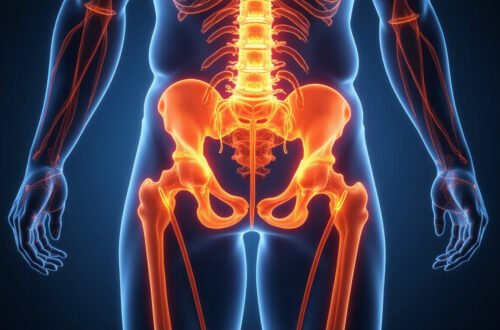Sciatica is a common yet debilitating condition that affects many individuals worldwide.
Characterized by pain that radiates along the path of the sciatic nerve, which extends from the lower back through the hips and buttocks and down each leg, sciatica can severely impact daily life.
While conventional treatments, such as medication and physical therapy, can provide relief, an increasing number of people are turning to alternative medicine for sciatica in search of more holistic and potentially life-changing solutions.
In this article, we will explore the causes and symptoms of sciatica, the role of alternative medicine in managing pain, popular treatments available, the benefits and risks associated with these approaches, and inspiring personal stories highlighting success with alternative medicine solutions.
Your Sciatica Pain-Free Future Starts Here – Click to Learn More!
Key Takeaways
- Sciatica is often caused by nerve compression, leading to pain and discomfort.
- Alternative medicine can play a crucial role in managing sciatica pain effectively.
- Popular treatments such as acupuncture, chiropractic care, and herbal remedies offer various benefits for sciatica relief.
- While alternative approaches may provide relief, it’s important to consider potential risks and consult with healthcare professionals.
- Integrating alternative medicine with conventional treatments can enhance overall effectiveness and patient outcomes.
Understanding Sciatica: Causes and Symptoms
Understanding Sciatica: Causes and Symptoms
Sciatica is a common condition that arises when the sciatic nerve, which runs from the lower back down through the legs, becomes compressed or irritated.
This often leads to symptoms like pain, tingling, and weakness in the affected leg, which can be quite debilitating for many individuals.
The causes of sciatica can vary widely, ranging from herniated discs and bone spurs to spinal stenosis or even muscle spasms in the lower back.
Recognizing these symptoms early is crucial for effective treatment.
Many people are now turning to alternative medicine for sciatica, exploring holistic approaches like acupuncture, chiropractic adjustments, and herbal remedies.
These methods not only aim to alleviate pain but also address the underlying issues contributing to discomfort.
If you are experiencing sciatica symptoms, understanding their origin can help you find the most effective relief through conventional and alternative treatments.
The Role of Alternative Medicine in Pain Management
Alternative medicine for sciatica has gained popularity in recent years as individuals seek holistic approaches to pain management.
Many people suffering from sciatica, which is characterized by pain radiating along the sciatic nerve from the lower back down to the legs, are turning to alternative therapies to complement or replace conventional treatments.
Techniques such as acupuncture, chiropractic care, and herbal remedies have shown promise in alleviating symptoms.
Acupuncture, for instance, aims to release endorphins that can reduce pain perception, while chiropractic adjustments may help realign the spine and improve overall mobility.
Furthermore, herbal treatments, including turmeric and willow bark, have anti-inflammatory properties that can provide relief.
By integrating alternative medicine for sciatica into a comprehensive pain management plan, individuals may find a brighter path toward recovery and better quality of life.
‘The greatest discovery of my generation is that a human being can alter his life by altering his attitudes.’ – William James
Popular Alternative Medicine Treatments for Sciatica
When it comes to finding relief from the debilitating pain of sciatica, many individuals are turning to alternative medicine for sciatica treatment.
This approach encompasses a variety of therapies that aim to alleviate discomfort and improve overall well-being without solely relying on conventional medications.
Popular options include acupuncture, which targets pressure points to ease nerve pain; chiropractic adjustments that align the spine and relieve pressure on the sciatic nerve; and herbal remedies such as turmeric and devil’s claw, known for their anti-inflammatory properties.
Additionally, practices like yoga and tai chi not only enhance flexibility and strength but also promote a holistic form of healing.
Each of these alternative medicine treatments for sciatica focuses on addressing the root causes of pain, encouraging natural healing processes, and enhancing the body’s ability to function properly.
Your Sciatica Pain-Free Future Starts Here – Click to Learn More!
Benefits and Risks of Alternative Approaches
When considering the use of alternative medicine for sciatica, it’s essential to weigh both the benefits and risks.
On one hand, many individuals find relief through holistic practices such as acupuncture, chiropractic care, or herbal remedies, which can reduce inflammation and improve mobility without the side effects often associated with prescription medications.
These alternative therapies can also promote a sense of well-being and provide a more comprehensive approach to pain management, addressing not just the physical symptoms but also the emotional aspects of chronic pain.
However, it’s crucial to be aware of the potential risks involved, as some alternative treatments may not be scientifically validated and can interact adversely with conventional treatments.
Therefore, consulting healthcare professionals and ensuring that any alternative approach complements existing medical advice is paramount.
By doing so, individuals can maximize the benefits of alternative medicine for sciatica while minimizing the risks involved.
Integrating Alternative Medicine with Conventional Treatments
When it comes to managing sciatica, an increasingly popular approach is integrating alternative medicine for sciatica alongside conventional treatments.
Sciatica, characterized by pain that radiates along the sciatic nerve, can significantly impact an individual’s quality of life.
Many patients find relief through a holistic blend of therapies.
Methods such as acupuncture and chiropractic manipulation, often considered alternative medicine, can complement traditional pain management techniques like physical therapy and medication.
This integrative approach not only addresses the symptoms but also aims to enhance overall well-being, making it essential for anyone suffering from sciatica to explore how alternative medicine can play a pivotal role in their treatment plan.
FAQs
What is sciatica and what are its common symptoms?
Sciatica refers to pain that radiates along the path of the sciatic nerve, which extends from the lower back through the hips and down each leg.
Common symptoms include lower back pain, sharp or burning pain in the leg, numbness or weakness in the legs, and difficulty moving the affected leg.
How can alternative medicine help with sciatica relief?
Alternative medicine can provide various approaches to manage and relieve sciatic pain.
Methods such as acupuncture, chiropractic adjustments, massage therapy, herbal remedies, and physical therapy can help to alleviate pain and improve mobility.
Are there any risks associated with alternative medicine treatments for sciatica?
While many alternative medicine methods are generally considered safe, there can be some risks such as adverse reactions to herbal supplements or improper techniques in physical therapy or chiropractic care.
It’s essential to consult with a qualified practitioner who is experienced in treating sciatica.
Can I use alternative medicine alongside my conventional treatments for sciatica?
Yes, alternative medicine can often be integrated with conventional treatments to enhance pain relief and management.
It’s important to talk to your healthcare provider to create a comprehensive treatment plan tailored to your needs.
Are there any personal success stories of using alternative medicine for sciatica relief?
Many individuals have reported successful experiences using alternative medicine for sciatica relief.
Personal stories often highlight improvements in pain management, increased mobility, and overall quality of life after integrating alternative therapies with traditional treatments.






